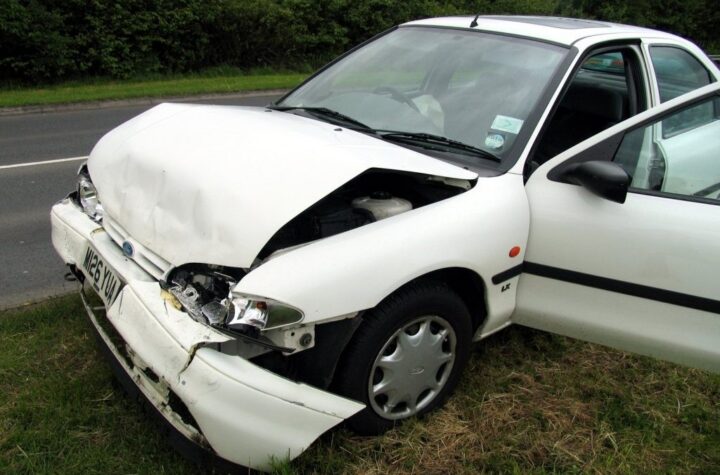
You’re on the path to mastering your Range Rover’s mechanics. Regularly troubleshoot engine overheating and electrical issues. Use an OBD-II scanner for check engine light diagnosis. Address air suspension troubles by examining springs, struts, and the compressor. Resolve transmission concerns and electronic handbrake issues with diagnostic tools and module resets. Tackle any steering system challenges and oil leaks swiftly. Remember, prompt action and proper maintenance improve reliability, enhance fuel efficiency, and extend your vehicle’s lifespan. As you dive deeper into these fixes, you’ll discover a wealth of knowledge leading to seamless drives and improved vehicle longevity.
Understanding Range Rover Common Faults
To truly troubleshoot and fix Range Rover common faults, you first need a thorough understanding of the issues that often plague this luxury vehicle. Let’s delve into the specifics.
The engine system of your Range Rover is prone to overheating. You’ll often notice an increase in the temperature gauge, which can lead to severe engine damage if not addressed. This issue often originates from a damaged head gasket, malfunctioning thermostat, or a leak in the cooling system.
Next, let’s explore electrical problems. Your Range Rover is packed with sophisticated electronic features, making it vulnerable to electrical glitches. You might experience issues with the infotainment system, navigation, or even the keyless entry system.
Lastly, oil leaks are common in Range Rovers, typically arising from a faulty seal or gasket. Check for signs of oil on the ground where you park or an oil smell while driving.
Troubleshooting the Air Suspension
Moving on from leaks and electrical issues, let’s tackle another common Range Rover concern: the air suspension system. This system is vital for ensuring a smooth ride, but when it fails, you’ll certainly feel it.
Firstly, pay attention to any unusual nosedive or squatting motions your Range Rover takes. It’s a key sign that your air suspension might be on the fritz. The vehicle’s inability to maintain a consistent height is another red flag. If you notice your Range Rover sagging towards one side, it’s likely due to a fault in the air suspension.
Now, let’s talk about solutions. You’ll want to start by examining the air springs and struts for visible damage. If they’re in good condition, check the compressor – it can often be the culprit. Listen for any unusual noises when it’s running, as these can indicate internal damage.
If everything seems fine so far, you might’ve a leak. Use a soapy water solution to check for bubbles around the air suspension parts. If a leak is detected, you’ll likely need professional assistance to remedy it.
Check Engine Light Issues
Shifting focus from suspension issues, let’s explore another vexing problem you might encounter with your Range Rover: the notorious ‘Check Engine Light‘ illuminating on your dashboard. This light is a warning signal, indicating a variety of potential issues that can range from minor malfunctions to significant mechanical failures. The challenge lies in the wide spectrum of problems it could represent.
- You might feel a pang of concern, not knowing whether it’s a minor hiccup or a major catastrophe.
- Your heart may skip a beat as you wonder about the potential repair costs.
- A sense of uncertainty may cloud your enjoyment of driving your beloved Range Rover.
To begin diagnosing the issue, you’ll need an OBD-II scanner to read the trouble codes stored in your vehicle’s computer. These codes will guide you towards the root of the problem. It could be as simple as a loose fuel cap or as complex as a failing oxygen sensor. Remember, ignoring this light could lead to more serious damage to your Range Rover. So, it’s important to take this warning seriously and act promptly to maintain your vehicle’s peak performance.
Overcoming Electronic Handbrake Problems
After you’ve addressed the mysteries of the Check Engine Light, you might find yourself dealing with another common Range Rover issue: electronic handbrake problems. These can appear as a sticking handbrake, failure to engage or disengage, or an irritating warning light on your dashboard. Don’t lose hope; with a little technical know-how, you can overcome this obstacle.
Firstly, it’s important to pinpoint the root cause. The most common culprit is a worn-out actuator, a small but crucial part that controls the handbrake’s movements. You’ll need to inspect this closely. If it’s the issue, it’s a relatively simple task to replace it, although a bit time-consuming.
Secondly, check for any software glitches. Range Rovers are known for their advanced electronics, but these can sometimes malfunction. You might need to reset the handbrake module using specialized software. If you’re not comfortable with this, it’s advisable to seek professional assistance.
Lastly, don’t overlook the basics. Make sure the brake pads and discs are in good condition and that the brake fluid is at the correct level. If they’re not, they could be causing your handbrake troubles. By following these steps, you’ll be well on your way to resolving your electronic handbrake problems.
Dealing With Transmission Troubles
Next on your troubleshooting list should be tackling transmission troubles, an issue that’s all too common for many Range Rover owners. You might experience difficulty changing gears, hear unusual noises, or notice a delay in vehicle movement. These are signs of a failing transmission, which, if not addressed promptly, can lead to costly repairs or even a complete transmission overhaul.
Here are three steps to get you started:
- Identify the problem: Pay attention to your vehicle’s behavior. A jerky movement or a sudden surge of power could indicate transmission issues.
- Investigate the cause: Use a diagnostic tool to read the error codes. This can help pinpoint the exact problem, whether it’s a worn-out clutch, a failing solenoid, or a damaged transmission fluid pump.
- Take Action: Depending on the severity of the issue, you might need to replace certain parts or even the entire transmission. If it’s beyond your expertise, don’t hesitate to seek professional help.
Steering System: Common Problems
If you’re noticing a stiff steering wheel or hearing unusual noises when turning, you could be dealing with common steering system problems in your Range Rover. The steering system is an essential part of your vehicle’s control, and any issues can greatly impact its handling and safety.
Problems with the power steering pump can cause stiffness in the wheel. Over time, the pump can wear out, leading to difficulty in turning the wheel. You’ll also notice that the stiffness is more pronounced at lower speeds.
Another common issue is a faulty steering box. If it’s failing, you might hear clunking or knocking sounds when turning the wheel. This is due to excessive play or wear and tear in the steering components.
A leak in the power steering system is also a common problem. You may notice a decrease in steering efficiency, and if left unchecked, this can lead to complete steering failure.
Resolving Oil Leak Issues
While steering faults can be a hassle, dealing with oil leak issues in your Range Rover can be equally challenging, often leading to engine damage if not promptly addressed. Oil leaks may originate from various areas, such as the oil pan gasket, valve cover gasket, or oil cooler.
To resolve these issues, follow these steps:
- Identify the source: Clean your engine thoroughly, then run your vehicle for a short time. The fresh oil leak will help you identify the source.
- Replace faulty parts: Once you’ve identified the leaking part, replace it. Don’t try to patch it up – it’s not a long-term solution.
- Regularly check for leaks: After replacing the faulty part, keep a close eye on your engine. Regular checks will help prevent future leaks.
Conquering Overheating Concerns
Beyond oil leaks, another common issue you might face with your Range Rover is overheating, which if ignored, can cause serious damage to your engine. This often happens due to a critical thermostat, clogged radiator, or a compromised water pump. When your vehicle overheats, it’s a clear signal that your cooling system isn’t functioning as it should.
The thermostat, a small device that controls the flow of coolant, can fail, causing your engine to overheat. It’s essential to replace it if it’s not opening as required. A clogged radiator, on the other hand, restricts the flow of coolant, leading to overheating. Regular radiator flushing helps prevent this issue.
Alternatively, a failing water pump, responsible for circulating the coolant, can also be the culprit. If you notice a coolant leak near the center of your car or hear high-pitched whining from the front of your engine, it’s likely your water pump needs attention.
In each case, prompt action is key. Don’t wait until the ‘check engine’ light comes on or until your engine overheats to get these issues checked out. Regular maintenance and keen observation of your Range Rover’s performance can prevent overheating and keep your engine running smoothly.
Conclusion
In your endeavor to conquer your Range Rover’s common faults, remember, like a well-tuned orchestra, every part must play its role flawlessly. A symphony of mechanical mastery awaits you.
From air suspension to oil leaks, don’t let these issues become your Achilles’ heel. Aim to maintain the harmony of your vehicle and keep it performing at its peak.
As you’ve seen, with knowledge and precision, these faults can be resolved. Keep your Range Rover’s performance in perfect pitch.
Photo Source: https://i.postimg.cc/4ypkdPd3/Mechanical-Mastery-Resolving-Range-Rover-Common-Faults-for-Optimal-Performance-0001.jpg





More Stories
DuPont materials science advances next generation of EV batteries at The Battery Show
How a Truck Driver Can Avoid Mistakes That Lead to Truck Accidents
Car Crash Types Explained: From Rear-End to Head-On Collisions